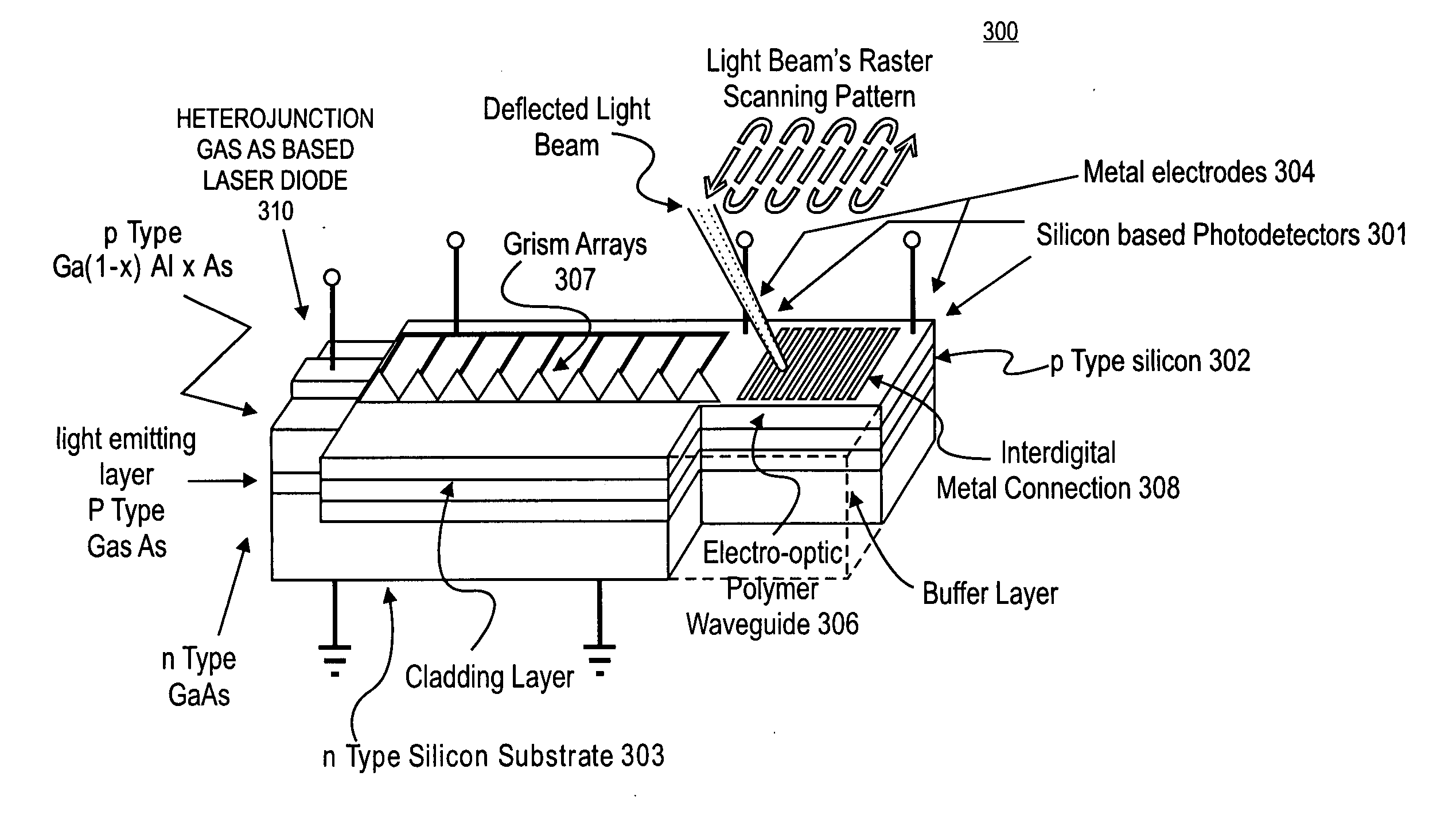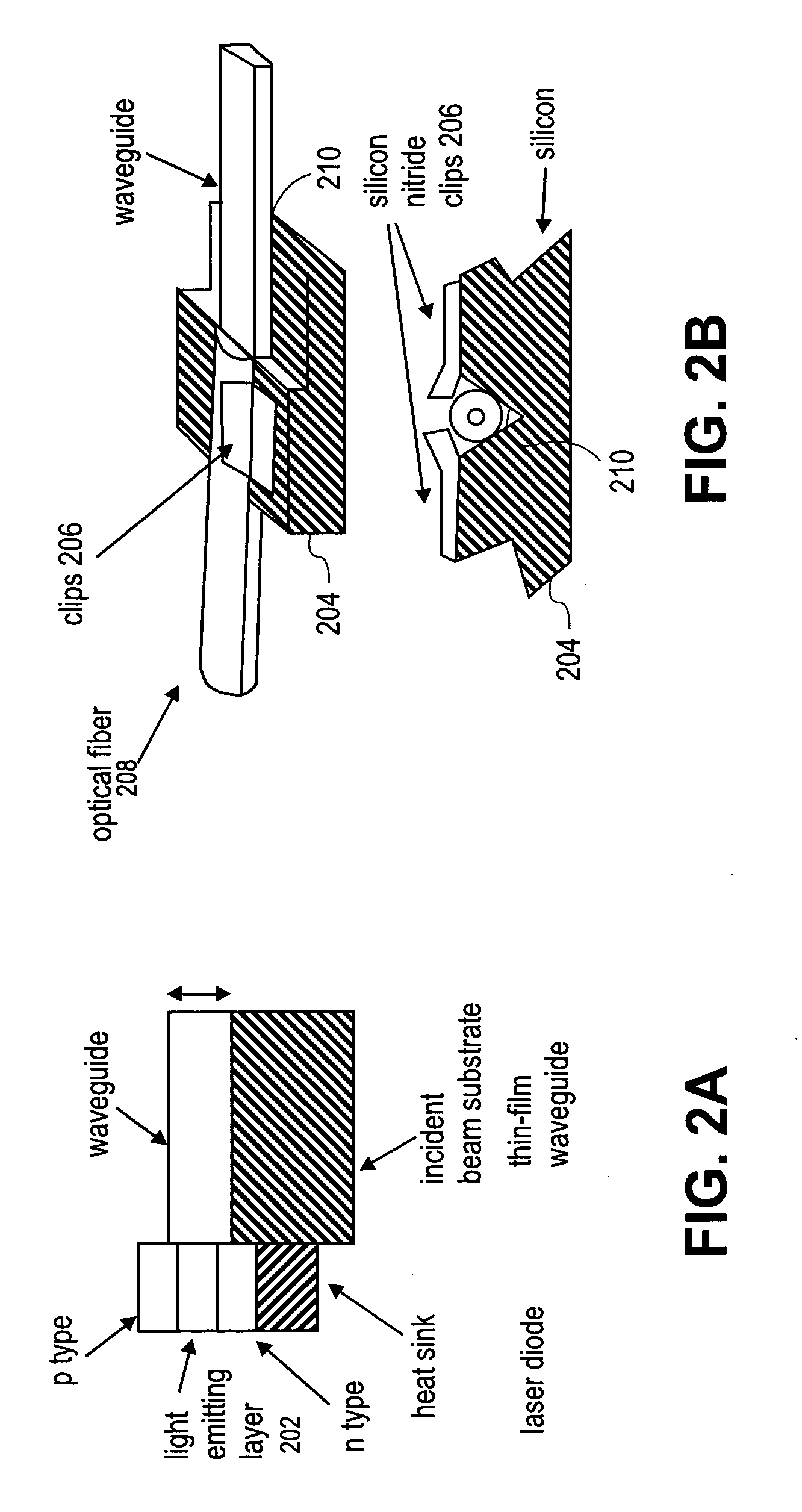Polymer based electro-optic scanner for image acquisition and display
an electro-optic scanner and polymer technology, applied in the field of image acquisition, can solve the problem of not capitalizing on this technology, and achieve the effects of easy prediction and control of exact location, maximum scanning frequency, and no image quality issu
- Summary
- Abstract
- Description
- Claims
- Application Information
AI Technical Summary
Benefits of technology
Problems solved by technology
Method used
Image
Examples
Embodiment Construction
[0033]FIG. 1 is a cross-section diagram of a two-dimensional electro-optic scanner 100 according to an embodiment of the present invention. In the illustrated embodiment, the scanner 100 includes an electro-optic waveguide 102 having a cascaded horizontal beam deflector array 104 and a Bragg grating coupler 106 disposed thereon. The example horizontal beam deflector array 104 includes nine individual horizontal beam deflectors, each of which includes a prism and a transmission grating disposed on the hypotenuse of the prism.
[0034] In the illustrated embodiment, the electro-optic scanner 100 is a multi-layer structure. The illustrated scanner 100 includes a first a layer 106, which is a layer of electro-optic polymer, a second layer 110, which is a layer of optical material with slightly lower index of refraction n than the index of refraction of the layer 106 of electro-optic polymer, a third a layer 112, which is a layer of optical material that serves as buffer layer to prevent l...
PUM
| Property | Measurement | Unit |
|---|---|---|
| core diameter | aaaaa | aaaaa |
| diameter | aaaaa | aaaaa |
| diameter | aaaaa | aaaaa |
Abstract
Description
Claims
Application Information
 Login to View More
Login to View More - R&D
- Intellectual Property
- Life Sciences
- Materials
- Tech Scout
- Unparalleled Data Quality
- Higher Quality Content
- 60% Fewer Hallucinations
Browse by: Latest US Patents, China's latest patents, Technical Efficacy Thesaurus, Application Domain, Technology Topic, Popular Technical Reports.
© 2025 PatSnap. All rights reserved.Legal|Privacy policy|Modern Slavery Act Transparency Statement|Sitemap|About US| Contact US: help@patsnap.com



